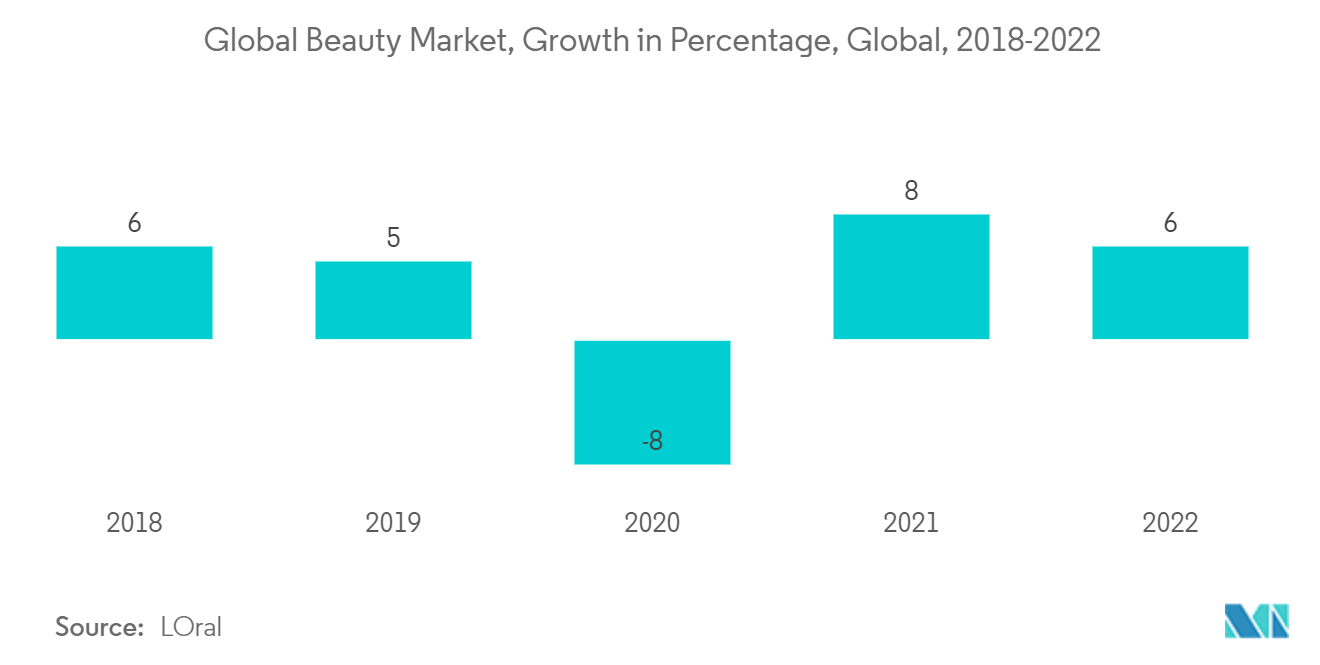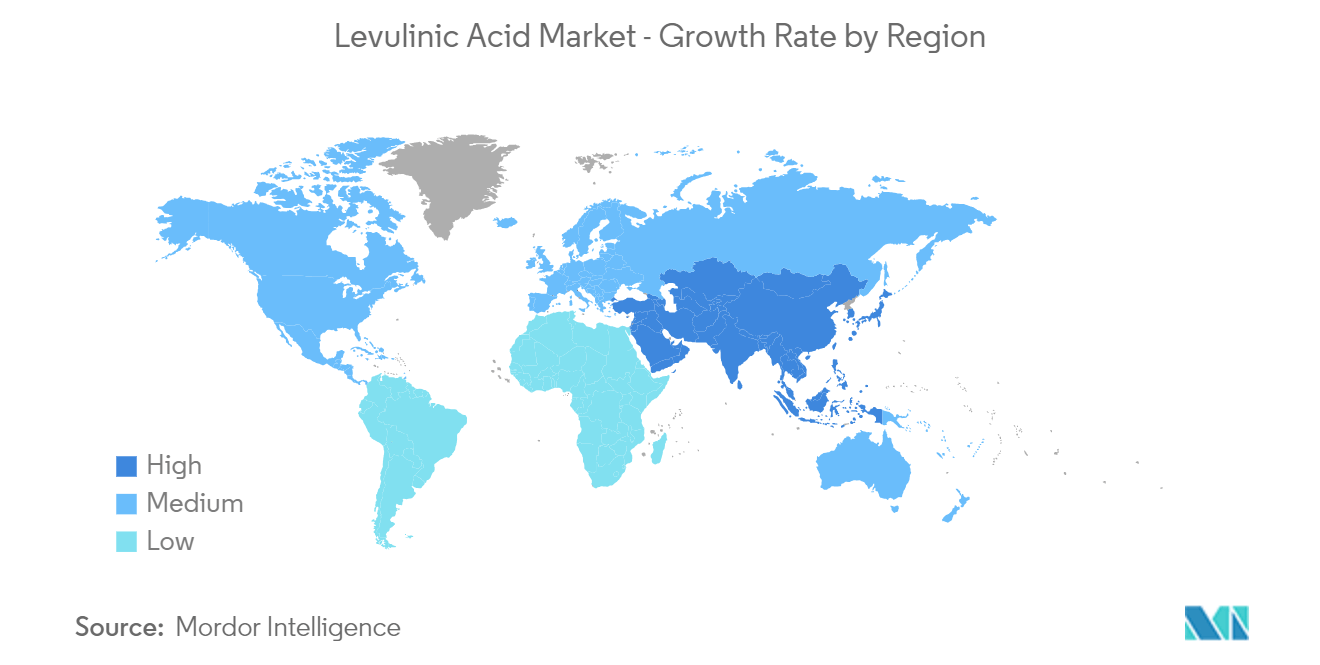Market Trends of Levulinic Acid Industry
Cosmetics and Personal Care to Dominate the Market
- Levulinic acid and its salts (majorly sodium levulinate) are water-soluble. They are commonly used in beauty and personal care products, as it is approved by the US Food and Drug Administration (FDA). Moreover, the rules governing cosmetic products in the European Union do not restrict these ingredients' use.
- According to the FDA's Voluntary Cosmetic Registration Program (VCRP) survey data, levulinic acid is used in around 130 cosmetic formulations, and sodium levulinate is used in approximately 400 cosmetic formulations; levulinic acid has the highest maximum concentration of around 4.5% in hair dyes, while sodium levulinate is used at a maximum concentration of 0.62% in mouthwashes and breath fresheners.
- Continuous growth in online beauty spending, expanding social network use, increasing consumer interest in new and premium products, accelerating urbanization, and the growth of the upper-middle-class population are the major factors driving the cosmetics market worldwide-the creamy, whisky fragrance of levulinic acid results in its heavy usage in the manufacturing of perfumes.
- According to Cosmetics Europe, the European cosmetics and personal care market is the world's largest cosmetic product market, valued at approximately USD 85 billion at a retail sales price in 2021. The average annual expenditure on cosmetics, perfume, and bath preparation products amounted to approximately USD 180 per consumer unit in the United States.
- Also, these ingredients are reportedly safe for use in products that come in contact with the eyes. For instance, sodium levulinate is used up to 0.57% in eye shadows and lotions.
- Levulinic acid is also used as fertilizer for high crop yields in agriculture. Levulinic acid metal plasticizers are highly used in phthalate plasticizers because they work perfectly with hydrophilic biopolymers like polylactic acid.
- The United States is the largest fertilizer market in the North America region, accounting for about 82.1% of the total market value in 2021 and occupying about 73.6% of the total agricultural land in North America. France is one of the largest fertilizer-consuming countries in Europe, with an expected overall share of 20.1% by the end of 2022.
- Levulinic acid derivatives are broadly used in fuel additives to advance fuel properties. Companies across the globe are introducing new products catering to a wide range of applications. For instance, Nxtlevvel and Elementis plan to launch two bio-based levulinic solvents for the industrial paints and coatings sector together in early 2022.
- The United States is considered the nucleus of global demand for levulinic acid. In 2022, the United States Department of Energy identified levulinic acid as an important platform chemical for green industrial chemical process development.
- All the factors mentioned above, in turn, are projected to impact the market studied during the forecast period.

Asia-Pacific to Dominate the Market
Asia-Pacific is the largest market for levulinic acid. It is also expected to be the fastest-growing market during the forecast period. The dominance is majorly attributed to the countries such as China, India, and Japan.
Countries like China and India are the largest consumers of fertilizers, especially because of their ever-increasing population and limited agricultural land. Hence, the need for fertilizers is high in these countries.
Levulinic acid is extensively used in cosmetics and personal care products due to its various properties, such as acting as a mild preservative with good antibacterial properties. According to the Ministry of Economy and Industry, India's beauty and personal care industry is expected to reach more than USD 12 billion by the end of 2023, with an annual growth rate of 6.5 %.
According to the World's Top Exporters, China was the third-largest importer of cosmetics in the world in 2021, with a total value of about USD 18.5 billion. Hong Kong, which imported skincare and cosmetics worth over USD 7.3 billion in 2021, was the next-largest cosmetics importer in Asia-Pacific.
China is one of the major consumers of cosmetics, which increases the consumption of levulinic acid from the cosmetics segment of the country. In 2022, wholesale and retail companies' retail sales of cosmetics in China totaled about USD 55 billion.
According to estimates, revenue in Thailand's beauty and personal care market is expected to reach USD 5.76 billion by the end of 2023. In 2021, Thailand's prestige cosmetic and fragrance market value amounted to around USD 340 million.
The players operating in the cosmetics industry focus on expanding their product portfolio to expand their beauty and cosmetics. For instance, in October 2021, Sephora China released more than 240 new beauty products from 51 brands, revealing the newness of 7 C-beauty brands and the domestic debut of five overseas niche brands.
Thus, all the factors above are expected to drive market growth in the region during the forecast period.


